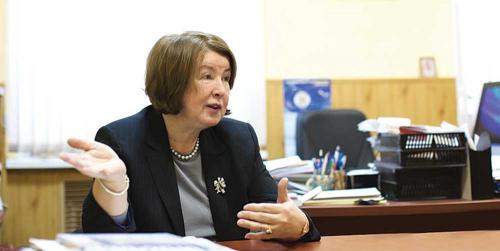The RACI’s centenary this year is a milestone – a unique opportunity to recognise what RACI has accomplished and to acknowledge its ongoing role and responsibility in the future of chemistry, both nationally and internationally.
In 2019, the International Union of Pure and Applied Chemistry (IUPAC) will likewise celebrate 100 years. The Union was formally registered on 28 July 1919. A steering committee set up by the IUPAC Bureau has outlined the following vision for the centenary, providing the following background and offering initial ideas. Subsequently, a formal IUPAC100 management committee has been established. Members at large, including individuals and national adhering organisations such as RACI, are invited to become involved in the various events and activities that are planned.
Background
As the curtain rose on the 20th century, chemistry was already a mature science and a thriving industry. But communication within the industry was difficult. There were few generally accepted norms for the naming of chemical compounds and chemists routinely did so according to their own personal preferences, resulting in multiple names for a single, unique compound. This lack of a universally accepted language in chemistry created a major barrier to the sharing of information, ultimately hindering efficient research and the rapid advancement of scientific discovery. Aware of this major barrier to the growth of scientific knowledge, a group of eminent chemists and visionaries from France, Belgium, Italy, the UK and the US gathered in 1919 to create IUPAC.
The IUPAC founders were also aware that chemical instrumentation and methodologies were continuously evolving towards greater precision and that more tools were being developed to assess the chemical and physical properties of substances. Therefore, IUPAC was given the charter not only to create a nomenclature that would facilitate communication within the chemistry community, but also to develop standards and norms for the calibration and normalisation of chemical substances.
What in 1919 perhaps seemed a distant and unachievable goal is today a reality. Thanks to the efforts of a legion of chemists over many decades, advances in scientific research have escalated due to the creation of universally accepted standards, terms and nomenclature.
IUPAC as a creator of the common language of chemistry
Conceived as an international organisation, IUPAC was born in the aftermath of World War I – an event that negatively affected the public’s perspective of science in general, and of chemistry in particular, leading them to question the peacetime role of chemistry and the societal benefits that it provides. Through the organisation of regularly scheduled scientific meetings worldwide, IUPAC has nurtured an international community that has dealt with all aspects of chemistry, pure as well as applied.
One hundred years later, IUPAC and the field of chemistry jointly face many interwoven challenges such as globalisation, the energy crisis, climate change and other environmental challenges. The IUPAC Centenary offers an opportunity not only to commemorate this century-old organisation, but also to rethink how IUPAC can better promote and advance the evolving field of chemistry, particularly as we move into the era of ‘big data’. It is an opportune time to take a critical and ambitious look at IUPAC in order to prepare the global chemistry community for the future, and to engage effectively with the next generation of chemists who will lead our science forward.
Chemistry is a major contributor to the well-being of humankind, from the ongoing evolution of better and more effective medicines to the production of safe, clean water. Some of its major breakthroughs such as the fixation of nitrogen to make fertiliser or the synthesis of nylon as a new material have greatly contributed to health and security, but there are still major challenges to be met. From societal challenges such as climate change to alternatives to fossil fuels, chemistry has a significant role to play in the invention of new solutions for a better and more sustainable future for all. Today’s United Nations Sustainable Development Goals (https://sustainabledevelopment.un.org/sdgs) are both a call to and a source of inspiration for chemists. IUPAC, as the international organisation of chemistry, should play a major role in creating the platform providing the resources and the network for delivering the needed solutions more effectively and in a collaborative and open manner.
IUPAC’s legacy is very rich and one that should be celebrated. After a century of activity and growth, IUPAC has helped to shape a very dynamic field of knowledge. Chemistry has reinvented itself several times since 1919, reorganising its structure through the creation of new subdisciplines, fostering new topics at the crossroads of well-rooted specialties, and forging multidisciplinary communities for the resolution of contemporary problems, such as the creation of new materials and environmental studies. Along with its constant effort to shape and constantly improve the language of chemistry to reflect new developments, IUPAC has also been instrumental in the support of education and in the global growth of chemistry. IUPAC remains an indispensable resource for chemistry.
Events and activities
IUPAC has made a formal submission to UNESCO to request the inclusion of 28 July in their calendar of anniversary dates for 2019; the executive board of UNESCO will advise its decision on this anniversary date during October 2017.
In July 2019, the global chemistry community will meet in Paris for the World Chemistry Congress (WCC) and General Assembly of IUPAC. This is not a coincidence! When offering the venue, French colleagues made the point of wanting to celebrate IUPAC’s centenary in the City of Light. The organisers of the 2019 WCC plan several events to celebrate the IUPAC Centenary, including sessions focused on IUPAC’s role in the evolution of chemistry, the revolution of instrumentation in chemistry, education and training in chemistry, and some of the scientists who have worked for IUPAC.
Other activities and events that are planned include:
- the celebration of IUPAC’s role in creating the common language of chemistry: This is envisaged as a key theme of the Centenary activities. Since the 150th anniversary of Mendeleev’s periodic table will also take place in 2019, this will also be highlighted in the celebration. An online global competition centred on periodic table trivia is planned and will reach a global audience of young students in a way that will be attractive to them, and that will give visibility to the work of IUPAC over the last 100 years.
- a video to gather, share, and visualise the history of IUPAC: This will document the many contributions made by this international organisation in creating a common language for chemistry, providing objective scientific expertise, and developing the essential tools for the application and communication of chemical knowledge for the benefit of humankind and the world.
- web stories: A series of 25 web stories will further highlight some of the essential tools and activities that have been created by IUPAC, and will highlight how these tools are currently being used by scientists around the world every day. Typical examples include InChI identifiers, Commission II – Atomic Weights, the various ‘colour’ books such as the Green Book on quantities, symbols and units used in physical chemistry.
- interactive periodic table: A group of young chemists will work under the IUPAC banner to increase the participation of early career chemists in IUPAC through stories of 100 influential chemists (from high school to established career scientists). One idea they have, again linked to the 150th anniversary of the periodic table, is to create an interactive periodic table organised by ‘jobs’ related to chemistry. Each ‘element’ will be a portrait of a person who works within the field of chemistry, and will address the diversity of chemists and/or students of chemistry worldwide.
- social media outreach: The young chemists group, working in association with IUPAC, also aims to increase the use of social media as an outreach tool within IUPAC and similar chemistry organisations, and to increase the awareness of the general public of how chemistry is intrinsically part of their everyday life. More than ever, global organisations such as IUPAC need to engage better with the community of chemists who represent the future of the discipline.
- logo competition: Prior to the Centenary, students worldwide were invited to design a logo as part of the celebration, and the successful entry was then reworked by a graphic designer (see image on page 20).
- virtual handshake: Using social media, IUPAC members and chemists worldwide will create a virtual handshake during a global breakfast to be held in May 2019 as a prelude to the main celebrations in July. In this activity, ‘Women Celebrating a Chemical Moment in Time’, women chemists and chemistry students from around the world will network by VOIP, Skype, social media and/or blogs. Some breakfasts will choose to have panel discussions or guest speakers. A website with the video on the history and language of IUPAC, and also for sharing footage, photos and stories post-events, will provide information for organisers of the various individual breakfast events.
- education and professional development: If funding can be obtained, a summer school in 2019 aims to teach green chemistry to young postgraduate and graduate chemists from the developing countries, in particular from Africa.
The way forward
The website for the IUPAC100 Celebrations (www.iupac.org/iupac100) will be launched during the latter part of 2017. The IUPAC100 celebrations will provide a unique opportunity for IUPAC and all its members to highlight the importance of chemistry in an international setting, and to preview the role of chemistry in the next 100 years. It will be excellent if Australian chemists joined in! How will you celebrate?






